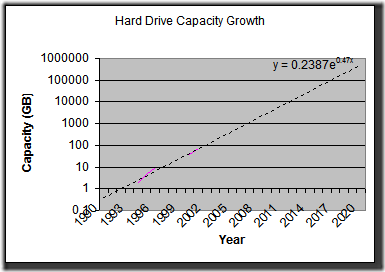I’ve been thinking a lot lately about the kind of technology and scientific understanding that would need to go into a computer like the one on the Enterprise in Star Trek, and specifically its interaction with people. It’s a computer that can respond to questions in context—that is, you don’t have to restart in every question everything needed to answer. The computer has been monitoring the conversation and has thus built up a context that it can use to understand and intelligently respond.
A computer that records and correlates conversations real-time must have a phenomenal ability (compared to our current technology) to not just syntactically parse the content, but also construct semantic models of it. If a computer is going to respond intelligently to you, it has to understand you. This is far beyond our current technology, but we’re moving there. In 20 years who knows where this will be. In 100, we can’t even imagine it. 400 years is nearly beyond contemplation.
The philosophy of computer understanding, and human-computer interaction specifically is incredibly interesting. I was led to think a lot about this while reading Robert Glass’s Software Creativity 2.0. This book is about the design and construction of software, but it has a deep philosophical undercurrent running throughout that kept me richly engaged. Much of the book is presented as conflicts between opposing forces:
- Discipline versus Flexibility
- Formal Methods versus Heuristics
- Optimizing versus satisficing
- Quantitative versus qualitative reasoning
- Process versus product
- Intellectual versus clerical
- Theory versus practice
- Industry versus academe
- Fun versus getting serious
Too often, neither one of these sides is “right”—they are just part of the problem (or the solution). While the book was written from the perspective of software construction, I think you can twist the intention just a little and consider them as attributes of software itself, not just how to write it, but how software must function. Most of those titles can be broken up into a dichotomy of Thinking versus Doing.
Thinking: Flexibility, Heuristics, Satisficing, Qualitative, Process, Intellectual, Theory, Academe
Doing: Discipline, Formal Methods, Optimizing, Quantitative, Product, Clerical, Practice, Industry
Computers are wonderful at the doing, not so much at the thinking. Much of thinking is synthesizing information, recognizing patterns, and highlighting the important points so that we can understand it. As humans, we have to do this or we are overwhelmed and have no comprehension. A computer has no such requirement—all information is available to it, yet it has no capability to synthesize, apply experience and perhaps (seemingly) unrelated principles to the situation. In this respect, the computer’s advantage in quantity is far outweighed by its lack of understanding. It has all the context in the world, but no way to apply it.
A good benchmark for a reasonable AI on the level I’m dreaming about is a program that can synthesize a complex set of documents (be they text, audio, or video) and produce a comprehensible summary that is not just selected excerpts from each. This functionality implies an ability to understand and comprehend on many levels. To do this will mean a much deeper understanding of the problems facing us in computer science, as represented in the list above.
You can start to think of these attributes/actions as mutually beneficial and dependent, influencing one another, recursively, being distinct (at first), and then morphing into a spiral, both being inputs to the other. Quantitative reasoning leads to qualitative analysis which leads back to qualitative measures, etc.
It made me think of Douglas R. Hofstadter’s opus Godel, Escher, Bach: An Eternal Golden Braid. This is a fascinating book that, if you can get through it (I admit I struggled through parts), wants you to think of consciousness as the attempted resolution of a very high-order strange loop.
The Strange Loop phenomenon occurs whenever, by moving upwards (or downwards) through the levels of some hierarchical system, we unexpectedly find ourselves right back where we started.
In the book, he discusses how this pattern appears in many areas, most notably music, the works of Escher, and in philosophy, as well as consciousness.
My belief is that the explanations of “emergent” phenomena in our brains—for instance, ideas, hopes, images, analogies, and finally consciousness and free will—are based on a kind of Strange Loop, an interaction between levels in which the top level reaches back down towards the bottom level and influences it, while at the same time being itself determined by the bottom level. In other words, a self-reinforcing “resonance” between different levels… The self comes into being at the moment it has the power to reflect itself.
I can’t help but think that this idea of a strange loop, combined with Glass’s attributes of software creativity are what will lead to more intelligent computers.

